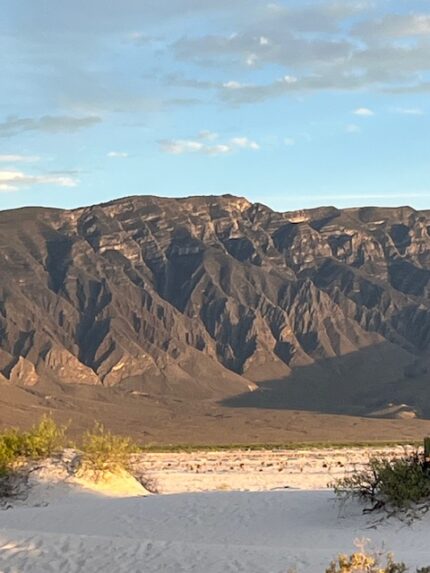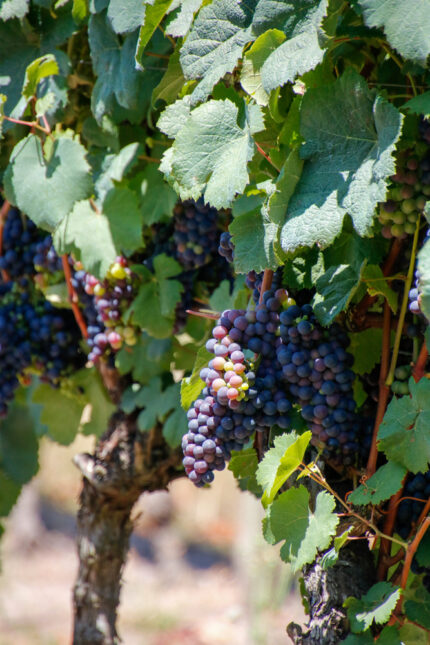 Art by Vino Mosaics, Wines by Paso Robles
Art by Vino Mosaics, Wines by Paso Robles
I first discovered the beauty and uniqueness of Paso Robles in 2016 while on a press tour of Texas writers. I didn’t know much about the region when I arrived, but left with a full understanding of the imprint this wine region has left on California as well as the number of diverse wines that are produced here. According to the Paso Robles Wine Country Alliance, it is the largest wine region in California – 30 distinct soil series, many microclimates and varying topography within 612,000 total acres.

Zinfandel is the region’s heritage wine grape variety – first planted in the late 1880s. Cabernet Sauvignon, Bordeaux, Spanish and Rhone varieties are the most widely produced. I love the ingenuity of some of the wineries – when Tablas Creek couldn’t get the quality of vines it wanted back in the 1990’s, it imported cuttings directly from the Beaucastel vineyard and then shared them. In fact, there are more than 400 wineries that have descendants of these cuttings today.
First, a little about Paso Robles, ‘The Pass of the Oaks,’ is located in San Luis Obispo County on the Salinas River. It is known for its wineries, olive oil and almonds as well as its mineral hot springs.
Paso Robles has a storied history in wine. Grapes were introduced in 1797 by the Spanish conquistadors and Franciscan missionaries. Spanish explorer Francisco Cortez had the vision this would be a great wine region and encouraged those in Mexico and California to come to the region. In 1882, Andrew York, who came from Indiana, established a winery that still stands today under a different name as Epoch Winery. Fast forward after Prohibition and growth continued. Paso Robles American Viticultural Area (AVA) was established in 1983 with 17 wineries and 5,000 vineyard acres with Zinfandel as the heritage grape. The real expansion occurred in 1990 when the winery count was 20 and today totals more than 200 wineries.
According to a study commissioned by the Paso Robles Wine Country Alliance, the Paso Robles AVA accounts for 87% of San Luis Obispo County wine industry output and economic impact with 40,000 vineyard acres and more than 200 wineries, 95% of which are small production, family owned businesses.
In 2009, the Paso Robles AVA was split into 11 smaller viticultural areas and at this time the winemakers began to expand into a wider variety of grapes include Bordeaux and Rhone varieties.
If you want to know more about my journey, which included zip lining over a pinot vineyard, click here, here and here.

Me and Geri
A group of bloggers was called together for an online Twitter chat with my friend @1WineDude aka Joe Roberts as moderator. Our focus was on four rosé and white wines. This was fun for me because I had an online blogger friend @geriteaches who happened to be in town for the tasting. She joined us along with some neighbors for dinner and we had a blast.

Dinner is Served Thanks to the Husbands

2016 Justin Vineyard Rosé – notes of tart red cherry, peach, apple, guava, herbs, flowers and a lovely crisp, dry and refreshing taste.
2016 Tablas Creek Vineyard Patelin de Tablas Blanc – a Rhône blend of Grenache Blanc, Viognier, Roussanne and Marsanne. I tasted notes of pineapple, peach, citrus, wet stone, lime zest with a little spice. It was a great wine.

2016 Vina Robles “White 4” Blend – notes of Bartlett pear, orange blossom, ginger, honey, peach, white pepper and tropical fruit.

2016 Adelaida Chardonnay – the crowd went wild for this one, but our bottle had cooked in the hot Texas sun and shipping heat.
All in all – these @pasorobleswines continue to reinforce my perceptions that you should expect the good things, hence the #unexpectedpaso when it comes to Paso wines.
Powered byTwitter



